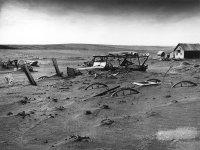Crow
Silver Member
- Jan 28, 2005
- 3,683
- 10,308
- Detector(s) used
- ONES THAT GO BEEP! :-)
- Primary Interest:
- Other
- Thread starter
- #21
Ah ha amigos
Crow perhaps this might be of some interest?

Here is an 1893 picture it would be interest to indemnify this location in relation to the railway line. This encampment Crow predates any alleged burial by the old Indian lad in 1896. And we have comments in one newspaper that she buried it near where she had her old Tepee? Was this a picture of John Mitchell's mother Ty-pee in 1893? Or just another group nearby?
Kanacki
Gidday Kanacki
I am not sure but an interesting Photograph. You can see the railways perhaps we can indenfy landmarks in relation to that land map I post earlier. Clearly near the railway land but I am not quite sure it was on the land rented by RE Kirckpatrick?
I love to say it was but I am not sure.
Crow








